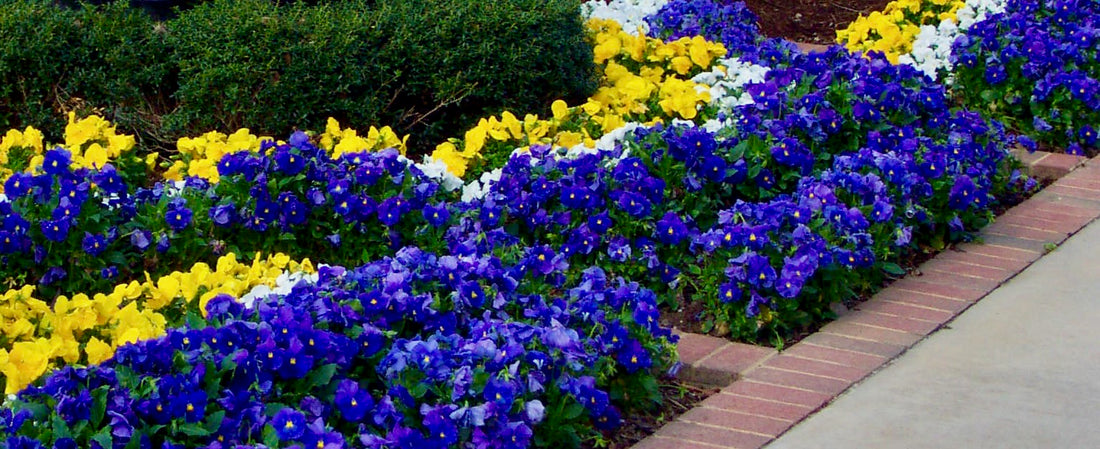Pansies, heart-shaped flowers, are vibrant winter annuals that keep landscapes bright and refreshing, adding life to fall gardens. Whether you want to grow these pretty flowers in beds or in patio or porch containers, these tried-and-true care tips will lead to healthy plants with plenty of blooms.
Best Time to Plant
Pansies do not like the heat. The Upstate of South Carolina is in USDA Hardiness Zones 7 and 8, meaning it is better to plant in the fall when the soil temperature is between 45- and 75-degrees F. That's when the weather is still warm enough to help the root system develop and prepare for the cooler temperatures that will come in December.
Premature planting when temperatures are still too warm will make the pansies turn yellow and leave them vulnerable to frost damage or pest and disease infestation. On the other hand, planting pansies when soil temperatures drop below 45-degrees F causes the plant’s roots to shut down, leading to few, if any, flowers. You can check your soil’s temperature with a soil thermometer to determine when to plant pansies in your specific micro-climate.
Starting Pansies
It can be difficult to start pansies from their seeds. However, if you do so, it is best to start the seeds indoors, sowing them by the end of summer for fall blooms. They take approximately one to three weeks for germination. After they start growing, transplant them into the soil outside.
Pansies prefer soil that is well-draining and rich in humus. Prepare the soil for planting with organic materials, such as peat moss or compost, with a three- to four-inch thick layer. Choose the place where your beloved plants will get at least six hours of sunlight every day.
Once your bed is prepared, place the plants seven to 10 inches apart. (See our article: How to plant flower beds).
Care For Newly Planted Pansies
To give pansies a healthy start, water them right away after planting and keep a regular watering schedule. Avoid getting water on blossoms or foliage, which might spread illness and cause them to rot.
Pansies can benefit from a little food. You can use all-purpose fertilizer to help the plants get enough nutrients, yet avoid using food that is rich in nitrogen, as this will result in more leaves and fewer flowers. Removing dead blooms will help to produce new blooms.
Bottom Line
The best time to plant pansies in South Carolina is during the fall, specifically October to Thanksgiving. Pansies can tolerate frosts, freezes, and the occasional snowstorm. They remain short until January and start to really flourish during the cool nights and warm days of spring. Fall-planted pansies provide your landscape with a great pop of color during what could otherwise be dreary winter garden days.

